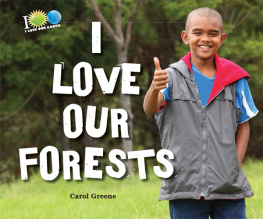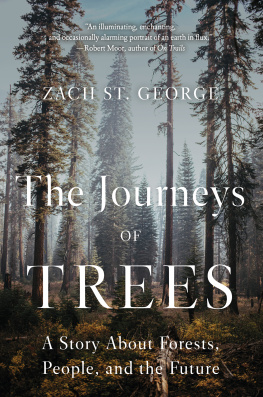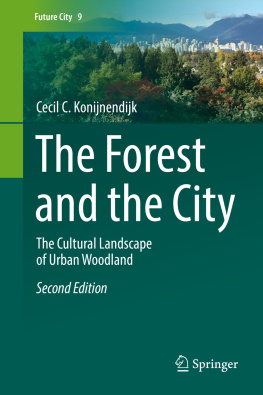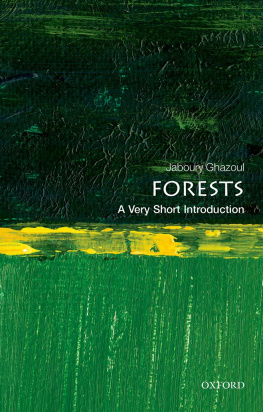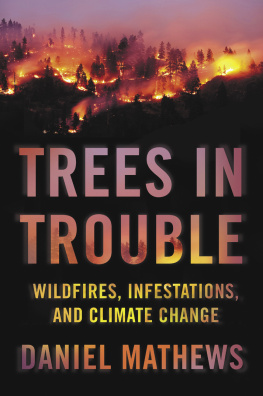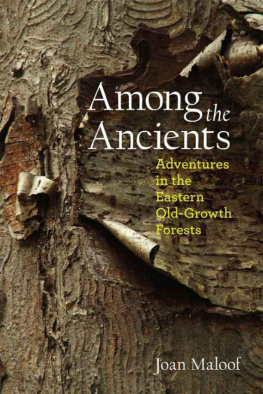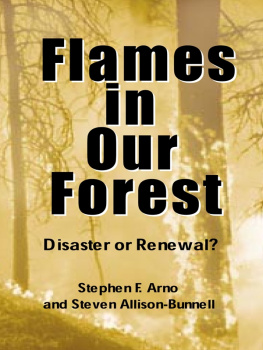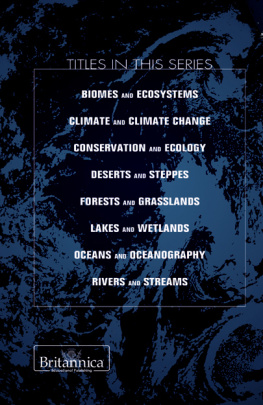Table of Contents
.
A record of the presentations from the Forests At Risk Symposium in Aspen, Colorado on Februrary 18, 2011
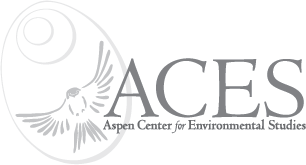
Our Forests At Risk
by John Bennett, The Aspen Center for Environmental Studies
The top scientists and policy makers who gathered at our 2011 Forests At Risk symposium represented a remarkable acknowledgement that climate change is profoundly affecting the region many of us call home the Rocky Mountain West.
For those of us living in Colorado, the destruction of millions of acres of pine forests by the mountain pine beetle, and hundreds of thousands of acres of aspen, spruce and fir from other parasites and infestations, is not news. Whats new is the emerging scientific consensus that climate change lies behind many of these forest threats and that our environment, quality of life and local economies hang in the balance. Consider the following:
According to the study led by scientist Phil van Mantgem of the USGS, the death rate of the Wests old growth forests has more than doubled over the last two decades.
Werner Kurz of the Canadian Forest Service and Intergovernmental Panel on Climate Change calculates that the 41 million acres of beetle-killed forests in British Columbia are adding roughly a billion tons of CO2 to our atmosphere. (And thats minor compared to what will happen if the permafrost continues to melt and release its vast store of carbon.)
Dr. Thomas Swetnam of the University of Arizona points out that the annual wildfire season in the West is already 78 days longer than just 20 years ago. Since the 70s, the Rocky Mountains have witnessed a 60 percent increase in large fires. If warming trends continue, Swetnam and others predict we could lose half the forests of the West during this century.
According to Diana Six at the University of Montana, the whitebark pine, a keystone species in high elevation zones of the Northern Rockies, is dying across most of its range. This could precipitate the loss or reduction of many plant and animal species, including the endangered grizzly bear.
These are startling trends. If the forests of the West are our canary in the coal mine, the canary is not doing so well.
The 2011 symposium FORESTS AT RISK: Climate Change & the Future of the American West was an opportunity to engage in thoughtful discussion and focus on serious challenges. It also highlighted the opportunity that arises when people and their leaders recognize challenges and are motivated to act.
Weve arrived at a critical time and place in history.
The landscape of the West is undergoing a profound and complex transformation. Four million acres of Colorado pine forests killed by the mountain pine beetle are now decaying, releasing their carbon into the atmosphere. The old-world view that forests always renew themselves, let nature take its course is clearly obsolete. Forests require up to a century to recapture all of the carbon released in a beetle epidemic, wildfire or other die-back, and climate scientists are virtually unanimous about the fact that we dont have that long. Put simply, if the great forests of the West continue turning from carbon sinks into carbon sources, were all in deep trouble.
Were going to win or lose the great carbon battle in the here and now, in our short lifetimes, so what can we do? Two answers come to mind: forest stewardship and clean energy.
At a regional level, we can employ scientifically based forest stewardship over large landscapes that are home to myriad types of flora and fauna. Outside of protected wilderness areas, good stewardship practice could begin to make up for past fire suppression policies that Forest helped at Risk create unnaturally dense, mono-culture forests that undermined forest health and wildlife habitat.
In forests across the West, we can support the efforts of the U.S. Forest Service to restore critical wildlife habitat through prescribed burns, thinning and other forest health measures. We can also support the efforts of local communities to protect forest health in the wildland/urban interface and forge a balance between ecological and recreation values in these backyard community forests where we enjoy both nature and recreation.
Most important, we can develop enlightened energy policies at the local, state and national levels to break our addiction to fossil fuels. We could generate biomass energy from beetle-killed trees, develop uses for biochar in restoring our environment, and expand the use of wind, solar and appropriate hydro power. While reducing atmospheric CO2, these steps would also stimulate our clean energy economy, create millions of new jobs and enable us to compete internationally with countries like China, which are pulling ahead in the clean energy race.
Our choices are clear. As individuals we can act to reduce our impact on the environment. As a society, we can enact policies that promote forest health and develop green energy alternatives that are both environmentally and economically smart.
Arent the forests and quality of life of the American West worth the effort?

Sudden Aspen Decline and Climate Change: Why More SAD May Await UsJim Worrall, PhD
Jim Worrall is a plant pathologist with the US Forest Service, who received his PhD in plant pathology from the University of California, Berkeley, and was associate professor at the College of Environmental Science and Forestry in Syracuse, New York before joining the Forest Service. He has conducted forest research in Germany, Alaska, California, New York, New Hampshire and Colorado. Jim is the leading authority on sudden aspen decline, a phenomenon of widespread, severe, rapid, dieback and mortality of aspen forests that is linked directly to climate change.
Id like to share with you whats been happening in some of our aspen forests over the last decade, how its connected to climate change, and projections for the future of aspen over the rest of this century. First, lets consider why we should care about aspen. Three reasons: first, aspen is a biodiversity magnet. There are more species that are associated with and in many cases specifically depend on aspen than on any of our major tree species. It also produces a lot of forage and browse for ungulates such as elk and deer. Overall, its the most diverse upland forest type that we have in the Rocky Mountains.
Second, it does good things for water. It starts with the rich organic soils that build under aspen forests. They have a high water holding capacity, low potential for erosion, they moderate stream flow and improve aquatic and riparian habitats downstream. Water yield of aspen forests can also be higher than from conifers. Finally, we all know that aspen is a beautiful tree and forest type and visitors know this too, and that is part of the reason for the tourism economy we have in Colorado.
That beauty began to fade in 2004; we started getting calls from foresters in Southwestern Colorado telling us about branch dieback and mortality that they hadnt seen before occurring over very large areas. It was apparently very recent and ongoing. In some of the lower elevation forest, such as you see here below, (see ), the patches of aspen were completely dead with no regeneration and no sprouting going on. Over the next few years, this got worse and occurred in more and more areas. By 2006, we knew it was a serious problem and started to study it.
Next page

